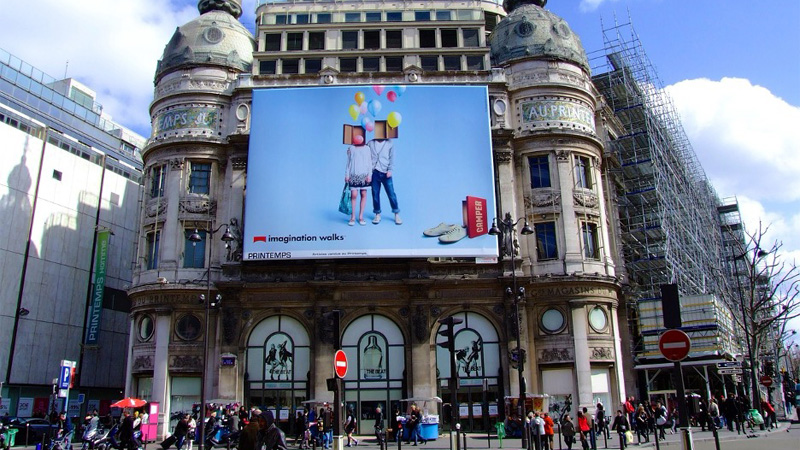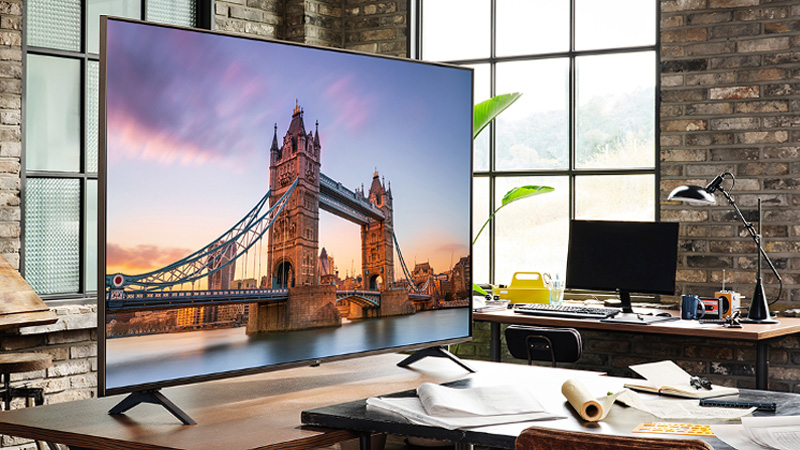
Projector Screen vs LED Wall: A Definitive Comparison
Video walls are an impressive and popular way of sharing your media in a stunning display, but there are other options. Projectors have long been used to deliver media experiences to crowds ranging in size from a handful to thousands.
There are notable benefits to both approaches to sharing your content with the world. Likewise, they both come with their drawbacks. Exploring the available options and understanding the underlying technology will help you select the best choice for your needs.
1. An Introductory Guide to Projectors and Video Walls
It’s simple to say, “Go out there and do your research”, but if you’re like a lot of people, you don’t even know where to start. That’s understandable, the world of high-definition displays isn’t an area that most people know well.
That’s why the experts here at LEDSINO have put together this comprehensive guide to help users like you make informed decisions about their next investment.
2. The Technology Behind Video Walls
Video walls are a term describing a network of monitors all linked together to create one larger display. These displays offer outstanding visual clarity and are available in a range of configurations that can meet many needs. Behind these displays can be found powerful hardware such as matrix switches, video processors, and video wall controllers that compose and control the imagery displayed.
These display walls can be used to present one large image or can break down the visuals into a series of various-sized sections. This creates a powerful platform that can dynamically present information all flowing from a central control unit. These inputs can be from a single device or can integrate web streams, pre-recorded media, and live video from local cameras.
There is little restriction to the size of a video wall beyond the space available and your budget. Video walls can be small enough to fit in an office corner or large enough to cover an entire stadium. This scalability makes them very desirable for many businesses, as they can be called upon to meet an immense range of needs and purposes.
There are two primary options when selecting a style of video wall. The first of these is LED Video Walls, a bright and eye-catching display format. LCD Video walls come next and are excellent for creating one enormous display out of multiple units. We’ll touch on each type and demonstrate their suitability for various applications.

3. LED Video Walls
One of the most popular choices in digital signage, LED video walls are a common sight in places like Manhattan, New York, and Piccadilly Circus in London. These areas have high foot traffic from locals and tourists alike and are prime locations for advertising. The LED video wall delivers stunning visual imagery that helps elevate the viewer experience.
This elevation also enhances the perception of individuals, brands, and events that are shared using this format. These devices are comprised of thousands of individual LEDs arranged in precise patterns. Each of these LEDs sheds its own light, ensuring a clearly visible image to observers.
Why Choose an LED Video Wall
● Energy Efficient – LEDs are renowned for the low energy cost required to produce steady, bright light. This makes them a great choice for displays using thousands of these LEDs as the collective cost remains low.
● Green Technology – This reduction in energy costs means less pressure on energy infrastructure. Whether you’re trying to reduce your carbon footprint or want to reduce the strain and fuel costs on attached generators, LED delivers.
● Longevity – LEDs are known for their durability and reliability. When you invest in an LED video wall you’ll know it’s going to go the distance and deliver stunning displays.
Reasons You May opt Out of An LED Video Wall
● Higher Cost – While long-term repair and energy costs may be low, the upfront investment is going to be higher overall.
● Thinner – While this is definitely a positive for many applications, their streamlined design also introduces a degree of fragility. This makes them best for static operation rather than using them on the move.
● Fading Light Quality – While LEDs are known for longevity, their intenseness and color stability can fade over time. This can lead to dull spots on your display, and variations in how colors are displayed onscreen.
Our Indoor LED Display XA-600-Series is a great choice for those opting for an LED video wall. These devices offer outstanding resolution, reliability, and expandability. Whether you’re to expand your command room or creating a stunning backdrop for presentations, they’ll deliver an outstanding experience.

4. LCD Video Walls
Want a dependable video wall that’s versatile, inexpensive, and delivers outstanding visual experiences, the LCD Video Wall may be your answer. These displays come in a range of designs and price points and are common choices for equipped control rooms and offices. Depending on your initial investment, these devices have bezels that range from seamless to wider. Bezels are the frame that surrounds the actual screen, and thinner bezels help to create the seamless look many look for.
Why Choose an LCD Video Wall
● Low Cost Of Entry – LCD technology has been around for quite a while, making it quite affordable. They’re a common choice for those with minimal needs or who are looking to invest in other video wall technology down the line.
● Durability – These video walls are excellent when durability is paramount. They’re an optimal choice when frequent transportation or the need for extended use exists.
● Easy To Find – As a popular form of Video Wall, these devices are easily accessible and can be found in a range of options and price points. This includes models produced by different brands in a variety of styles.
Reasons You Not Select an LCD Video Wall
● High Energy Costs – LCD walls have a high energy consumption relative to other available options. This puts a greater strain on any connected electrical systems and contributes to your carbon footprint.
● Larger Bezels – LCD monitors aren’t always a great option for integrated multi-screen displays. These units tend to have wider bezels than other options, impacting the ability to create a truly seamless display. This can have negative implications for viewer experience.

5. The World of Projector Technology
Projectors as a form of display technology have been around for over a century. The film projector was invented early in the 20th century. The introduction of this device led to the ultimate development of the high-resolution projector displays in use today. For many years early projectors were used in education, business, and even backyard family events to view various forms of media.
The foundation of modern projector technology shares much in common with earlier devices. Images are projected by passing light through a lens fitted with color wheels, colored lenses, and filters. Just as LED technology has come to video walls, so have they become one of the most popular forms of projector.
They work by combining three colors of light (red, green, and blue) to generate ‘white light’. This light passes through a lens and creates an image on a screen. This display technology is broadly available and can be incredibly versatile. However, it is not without its drawbacks.
Where A Projector Excels
● Compact – Projectors are very conservative on space, with the entire device fitting in a single box. They can project very large images without requiring much space for the projector itself.
● Inexpensive – Due to the relatively primitive technology powering them, these devices are quite inexpensive. It’s also possible to find used units at reduced prices if you know where to look.
● Versatile – Their durability matches with their compact design to make these devices very adaptable. They can be used anywhere that the right conditions can be found, and aren’t easily damaged.
Where Projectors Fall Short
● Darkness Required – One of the greatest limitations these devices face is their inability to function in bright spaces. They can be perfect for outside night-time venues, and work well inside where the light can be controlled. However, if darkness isn’t available, their display is difficult to view.
● Shadowing – While LED and LCD video walls aren’t subject to shadowing, the light from the project is. Anything passing between the projector itself and the screen the image is being displayed on will result in stark shadows.
● Difficult To Install – Depending on the nature of the presentation, a projector can be quite demanding to set up. This is particularly true if you’re trying to integrate it with other technology, such as an interactive whiteboard.

6. Choosing The Right Option for Your Display Needs
With all the above considered, it can still be tricky to ensure you’re making the right choice for you. It’s important to consider all the angles related to your needs. If you’re choosing a device for your business, consider the upfront costs as well as the long-term benefits that the device will bring. During this process, make sure that you understand every situation this display might be used in. This will help you be certain it will be able to provide the best results when you need them.
In any decision where money is involved, it always pays to involve the experts. The team at LEDSINO is ready to work with you to fit the right video display to our customer’s needs. We can offer a range of options from purchase to rental. We want to ensure that everything, from the type of display to how you pay for it, works for you and your budget.